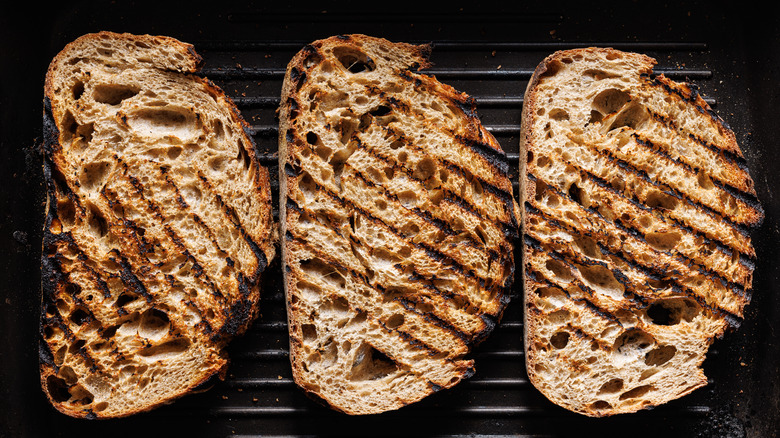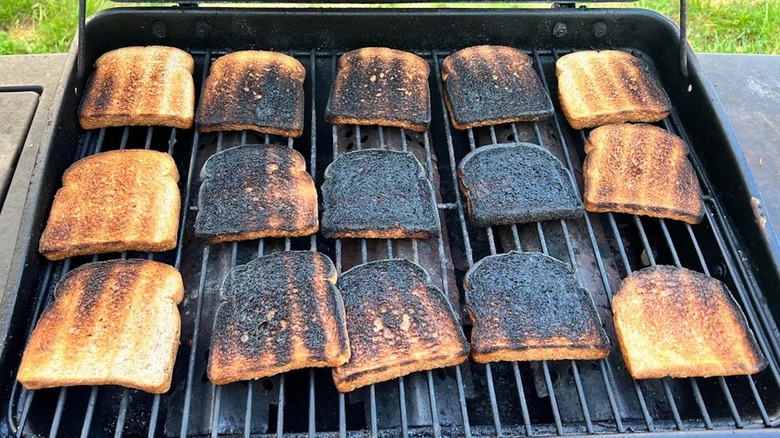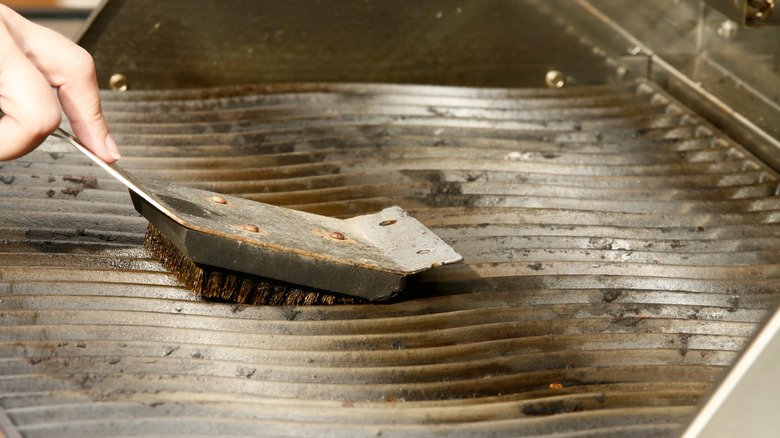The Bread Hack To Test Your Grill For Hot Spots
If you work with any grill long enough, you'll notice that it's got hot spots, or areas of the grill where your food cooks fastest. Of course, this means there are also colder spots where you might risk undercooking if you don't leave your food there for long enough, which is especially a problem if you're grilling steaks, burgers, or any kind of meat. All grills have hot spots, and they're not necessarily problems that need to be fixed, but it is worth it to know where they are so you can either avoid or use them to your advantage.
The easiest way to do this involves nothing more than a loaf of sliced bread. First, preheat your grill for about 15 minutes on high. Once slice at a time, cover the entire grate of your grill with slices of bread. They should be lying flat on the grill and lined up side by side. Let them grill for a few minutes on medium heat and then flip each slice over one by one. Look at which slices have burned the most, and there are your hot spots. This should work fine on gas grills, pellet grills, and even griddles.
A few helpful tips
Laying out bread is a beginner's grilling tip rather than a complicated process, so the specifics don't matter too much, but here are a few tips. First, try to flip your bread over in the same order you laid it down so each piece of bread grills for about the same amount of time; that will give you the most accurate results. Also, white bread works best because it'll be easier to see the burnt spots, and it's best to use cheap bread because the results probably won't be appetizing. However, that doesn't mean you should toss the bread afterward because these can be reused for breadcrumbs or croutons if they're not too burnt.
Again, hot spots aren't always bad. Once you know where they are, it can be useful to grill different things at once at slightly different temperatures. Using this trick, you can get a pretty accurate heat map to use as a reference.
Keep it clean
Hot spots exist in the first place because the air beneath the grates of your grill (or the surface of your griddle) doesn't flow completely evenly. As a result, hot spots will form wherever the airflow concentrates; these are usually by the grill chimney or back vents. While those hot spots are normal, other hot spots can also form from internal damage, like clogged or damaged burners for example.
If you suspect the hot spots might be due to damage, you can fix that with some handiwork. Besides the aforementioned clogged burners, you can also check for grease buildup or misaligned burner tubes. To check for blockages or buildup, remove the grate and scrape off any debris underneath. For misaligned tubes, check whether the tubes are properly lined up with the burner (the valve should be inside the burner's opening). Always make sure any gas is shut off or disconnected before attempting any DIY.
Cleaning your grill should be a regular part of your grill preparation routine, because besides hot spots, a clean grill will help eliminate bacteria from your food and improve its taste. It also helps make sure that your hot spot doesn't escalate into a flare-up: this is when oil or fat drips through the grate and ignites a flame that shoots up way too high. Sometimes you want a hot spot, but you never want a flare-up.


